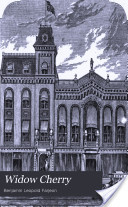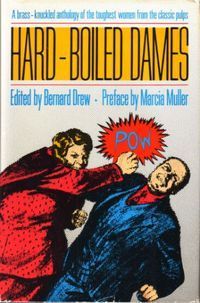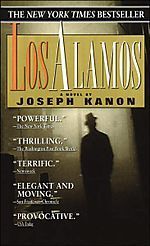B.V. Lawson's Blog: In Reference to Murder, page 226
April 21, 2013
Media Murder for Monday
 MOVIES
MOVIESCrime writer SJ Bolton's debut novel Sacrifice, inspired by her research into Nordic mythology, is finally coming to the big screen, with filming beginning in mid-May (in Ireland, New York and Shetland). Peter A. Dowling has signed on to direct, with the cast including Connie Nielsen, Charles Dance and Rupert Graves.
Omnimystery News reported that Fox 2000 has acquired the film rights to John Grisham's 2011 legal thriller The Litigators; the studio already has another of Grisham's novels, The Racketeer, in production.
Paul Sorvino has joined the cast of the thriller Careful What You Wish For, playing a sheriff. The plot centers on a man named Doug (Nick Jonas), who has an affair with a woman (Isabel Lucas) married to an investment banker (Dermot Mulroney). When the husband dies suspiciously, Doug becomes entangled in the investigation.
Image Entertainment picked up U.S. and Canadian film rights for Nick Murphy's thriller Blood, which follows the moral collapse of a close police family and stars Paul Bettany, Mark Strong, Brian Cox, and Stephen Graham.
The Weinstein Company optioned Matthew Quick's soon-to-be-published young adult novel of suspense Forgive Me, Leonard Peacock.
Sony purchased a spec thriller script from Tina Gordon Chism. The project, titled Inheritance, focuses on a young female lawyer handling the case of a New Orleans coffee magnate whose passing sparks a deadly chain of events.
Chernin Entertainment bought the rights to Marisha Pessl's unpublished book, Night Film. The story follows an investigative reporter, looking into the death of a beautiful young woman, whose discovery the victim is the daughter of a reclusive horror film director plunges the reporter into a journey of revenge and truth. (Hat tip to Omnimystery News.)
Writer/Director Franck Khalfoun's action thriller Motherload was picked-up by producers Alix Taylor and Pav Hatoupis. The story is about a woman imprisoned for murdering her husband who breaks out of prison and goes on a rampage across the country to retrieve her children placed in various institutions.
Director Robert Lorenz is teaming with producer Sam Worthington on the period indie movie, The Broken. The story is set in 1967 Oklahoma, where a war veteran investigating the suspicious death of his estranged son learns it was a covered-up gay bashing and goes on a one-man mission to take down the corrupt sheriff responsible.
TV
Showtime made it official and announced that Season Eight of Dexter, which will premiere June 30, will be the last for the serial-killer series. However, the network hasn't ruled out a spin-off series.
BBC is developing a remake of the 1980s drama Bergerac, which featured Detective Sergeant Jim Bergerac, an officer in the fictional Le Bureau des Étrangers police department. The network may be envisioning the project as a prequel to the original series.
AMC has put in an order for a new futuristic procedural series titled Ballistic City. It's described as "Blade Runner meets Battlestar Galactica" and
centers on a former cop thrust into the criminal underworld of a
city housed in a space ship destined for an unknown world.
Former Buffy the Vampire Slayer star Anthony Head is joining Syfy's Warehouse 13 in a major recurring role as a bad guy, and Joel Gray will guest star in an upcoming episode as a magician.
NCB's supernatural police procedural Grimm, starring David Giuntoli, is moving to a better time slot on Tuesdays, taking over from the recently-cancelled Ready for Love.
PODCASTS/VIDEO/RADIO
Louise Penny and tour guide Marie Legroulx joined Radio Noon Montreal on the CBC to talk about the tour based on her mystery hero to be offered in Quebec this summer.





April 18, 2013
Friday's "Forgotten" Books - Widow Cherry: or The Mystery of Roaring Meg
 Benjamin Leopold Farjeon (1838–1903) was a British novelist, playwright, printer and journalist. He didn't have formal schooling but trained as a printer at a newspaper office at age 14. He immigrated to Australia in 1854 after a row with his father over religion and spent seven years on the goldfields. He settled in New Zealand, where he established his successful literary career and became assistant editor and part proprietor of the Otago Daily Times of Dunedin. Eventually he returned to England to devote himself to writing.
Benjamin Leopold Farjeon (1838–1903) was a British novelist, playwright, printer and journalist. He didn't have formal schooling but trained as a printer at a newspaper office at age 14. He immigrated to Australia in 1854 after a row with his father over religion and spent seven years on the goldfields. He settled in New Zealand, where he established his successful literary career and became assistant editor and part proprietor of the Otago Daily Times of Dunedin. Eventually he returned to England to devote himself to writing.In a brief biography of Farjeon, Sir George Fenwick described him as being "The quick, alert, restless type, of rather short stature, with beady black eyes." His daughter, Eleanor, herself an author of children's books, once described her father as "Exuberant, impetuous and extravagant...His mood (when it wasn't irascible) was overflowingly generous."
His literary output was prodigious, writing nearly sixty novels in thirty-five years, most with mystery and adventure themes that drew on his colonial experiences in Australia and New Zealand. His books were bestsellers in their day, with the novel Grif in its seventeenth edition as of 1898, but they were gradually forgotten. Widow Cherry: or, The Mystery of Roaring Meg, is short enough to be a novella and first appeared in Tinsley's magazine. It was eventually bound into a volume of three Farjeon Christmas-themed stories, although the Christmas element isn't very present in Widow Cherry.
The story is set in Australia in a mining town named after the river that flows nearby, Roaring Meg. Young Jack Thumbwood has come to town to stake his claim to a potential mine, but needs the help of an elderly Cornish miner nicknamed Star-by-night and a friend from the old country, Fred Mellon, who Jack convinces to join him. From there, the premise is a fairly straightforward tale of romantic suspense when Jack is arrested for the murder of his young love's sister, and Fred has to investigate and defend him, with the help of his own love interest, the "Widow Cherry."
The denouement, or turning point for the murderer, relies upon his guilty conscience as he sees a bottle of his favorite liquor, Red Rum, reflected backward in a window. I haven't seen any quotes from Stephen King that he had ever read this novel before writing The Shining, but it was a bit of fun to find it buried in an obscure book from 1878.





April 17, 2013
Mystery Melange

Poe book sculpture by raidersofthelostart
If you live near the North Carolina Research Triangle region, "Making Crime Pay" is a workshop for aspiring mystery writers offered by the Halle Cultural Arts Center in Apex on Saturday, April 20. Authors Marcia Talley and Kate Charles will share their expertise in the intensive, one-day workshop including writing tips, preparing a manuscript for submission, agents, reference books, working methods, and publicity.
Authors M R Hall and William Ryan and literary agent David Headley have teamed up as "Hall Ryan Headley" to offer intro workshops to crime writing. On May 11-12, their two-day course in London aimed at everyone from experienced writers to absolute beginners, takes attendees through the elements of a crime novel, from characterization and plotting to choosing a setting and undertaking research.
ThrillerFest is adding a couple of new events to this year's conference: a FanFest and a Tweeting Contest. The former is a cocktail party with authors and their specially-invited fans, but it's also open to all conference attendees; the latter is for attendees and the general public, with winning Tweeters (just use the hashtag #Thriller13) receiving gift cards.
Dana Stabenow (author of the Kate Shugak series) launched a campaign to raise $1 million to build an Alaskan retreat for female writers, Storyknife Writers Retreat, only the second residency of its kind in the world. When the project is complete, writers will be admitted to the residency after a rigorous application process, including statements of need and samples of work. Upon successful admission, writers will come to Storyknife for two-to-eight-week residencies to focus on their diverse projects in uninterrupted peace, an atmosphere made possible by the Storyknife endowment.
The father and son author team Stephen King and Owen King will headline a
benefit for PEN Canada on Thursday, October 24 in the Fleck Dance
Theatre at Harbourfront Centre,
Toronto. Award-winning mystery writer Louise Penny will moderate the
discussion. Tickets for the general public will be available starting
this Thursday, April 18 by calling the box office or by visiting www.readings.org.
Happy news for libraries and fans of crime fiction: the Library Journal reported that a survey of 232 public libraries found 55% of respondents said mystery continues to be the most
popular genre in terms of circulation. The survey also found that in
print fiction collections, 24.1% of materials are mysteries.
The Q&A roundup this week includes Irish author Marian Keyes, chatting with Mysterious Musings about her latest cozy/traditional novel, The Mystery of Mercy Close; and Dana Haynes joined Lesa's Book Critiques and talked about his novels under the pen name Conrad Haynes.
The Guardian posted "The 10 best real-life spies -- in pictures."





April 14, 2013
Media Murder for Monday
 MOVIES
MOVIESRobert Redford is teaming up with David Lowery to adapt and direct The Old Man and the Gun, a film based on a 2003 New Yorker article about a bank robber who spent almost his entire life either in prison or breaking out of it. Redford would produce and star, while Lowery would direct.
The 15th annual Festival Of Film Noir has returned to the Egyptian Theater in Hollywood. Sponsored by The American Cinematheque and the Film Noir Foundation, the festival runs through April 21. There's also a special 60th anniversary showing (at the Aero Theatre) of the long-lost noir Man in the Dark in fully restored 3-D.
Hat tip to It's a Crime for noting the BAFTA TV nominations for 2013. Nominees for Best Drama Series included the legal/detective series Ripper Street, Scott and Bailey, and Silk; nominees for Best International Series included crime dramas Homeland (U.S.) and The Bridge (Denmark/Sweden).
Universal released the first stills from the upcoming R.I.P.D., starring Ryan Reynolds and Jeff Bridges. The film is based on the Dark Horse graphic novel by Peter M. Lenkov and follows a young cop (Reynolds) who joins the Rest In Peace Department in the afterlife, a police force dedicated to solving crimes of the undead. The cop teams up with a gun-slinging cowboy from the old west (Bridges) in order to find the guy who killed him (Kevin Bacon).
The remake of the 1991 action thriller Point Break is looking more likely after the announcement that Ericson Core has signed to direct the film. The story follows an undercover FBI agent infiltrating a crime ring in the world of extreme sports. (Hat tip Omnimystery News.)
Sony Pictures won the bidding war for the right to remake the Korean crime film New World.
The script, to be adapted by Will Fetters, is about a mob boss who is
gunned down and the battle among mobsters who want to succeed him,
including an undercover cop.
TV
Omnimystery News reports that Clerkenwell Films is developing an 18-part television adaptation of the nine spy thriller novels by Len Deighton featuring Ex-MI6 field agent Bernard Sampson.
Tania Raymonde (from Lost) and Scott Eastwood, son of Clint Eastwood, are the first actors cast on the unnamed Chicago Fire spin-off about the Chicago Police Department.
A&E has ordered to series Those Who Kill, based on the Dutch crime drama Den som dræber from a concept by crime novelist Elsebeth Egholm. The 10-episode project stars Chloë Sevigny as a homicide detective James D'Arcy as a forensic psychiatrist.
Game of Thrones star Natalie Dormer has signed on to play Irene Adler, the woman Sherlock refers to as "the woman" in the CBS series Elementary.
Homeland star David Marciano is leaving the show as a regular and is developing a cable drama based on a real criminal enterprise that operates out of a prison.
Patricia Arquette is joining the cast of Boardwalk Empire, playing Sally Wheet, a tough-as-nails Tampa speakeasy owner with connections to local gangsters.
Alfre Woodward is leaving True Blood to join the second season of Copper, BBC America's period police drama set in the 1860s in New York City.
Lifetime is producing a sequel to their recent human trafficking drama, this one to star Kirstie Alley and Jennifer Finnigan in a story about "the dark international crime enterprise of infant trafficking under the guise of seemingly regulated adoption."
Crime Time Preview has a first look at Gillian Anderson as DSI Stella Gibson in BBC2's The Fall. The series is set in Northern Ireland and follows Anderson's character who is called in to track down a serial killer terrorizing Belfast.
PODCASTS/RADIO/VIDEO
Nightline featured Mark Geragos, co-author of Mistrial: An Inside Look at How the Criminal Justice System Works...and Sometimes Doesn't.
Joining Imus in the Morning last week: Mary Higgins Clark, author of Daddy's Gone a Hunting.





April 12, 2013
Friday's "Forgotten" Books - Los Alamos
Patti Abbott is celebrating the fifth anniversary of Friday's "Forgotten" Books, so I thought I'd repost my very first offering from 2008 in honor of the event:
When Patti Abbott
asked me to contribute to "Forgotten Book Friday," I considered what
that meant exactly. Except for a few landmark works in crime fiction
history, most folks probably can't name titles or even the plots of
books, aside from a handful like The Big Sleep, Maltese Falcoln, or Murder on the Orient Express.
Even many readers of the genre might be hard pressed to remember a
large number of other tiles. So in that sense, most books are
"forgotten," eventually.
This left me with thousands upon thousands of books to write about,
and not being that decisive, I went with a topic of recent interest. The
hubster had fondly remembered a TV series called Oppenheimer
from 1982 starring Sam Waterston and David Suchet among others, which
had long been unavailable on video in any format. When it recently came
out on DVD, he arranged to get it and we watched it together. Since the
hubster has a physics background and has long been fascinated with the
Manhattan Project, it seemed like a good parallel to read the book Los Alamos by Joseph Kanon.
Yes, it was a bestseller and yes, it did receive the Edgar for Best
First Novel in 1998, but I doubt that 95% of Americans could recall it.
Kanon certainly wasn't shy about taking on some of the darkest days
and most pivotal moments in the planet's history as the background for a
mystery. And I say mystery, because although it's been classified as a
"thriller," it really doesn't fit the current style of thrillers; it's
relatively slow-paced through the first half, the murderer isn't known
until near the end, and the writing style pays as much homage to a
"literary" work like John Banville as it does a typical spy thriller.
Those who have become accustomed to the short-chapter format of a James
Patterson or Dan Brown will probably want to hurl the book across the
room.
In an interview
as to why he chose the setting, Kanon said, "What fascinated me was
that the place didn't officially exist. I thought: What would happen if
there were a crime in a place that didn't exist?" And so the story
hinges on a fictional protagonist, civilian intelligence liaison Michael
Connolly, brought in to investigate the murder of a Los Alamos security
officer, his face bashed in and his pants pulled down. Connolly is
asked to discover whether the crime is more than the violent sex crime
it appears to be, even while those associated with the project, paranoid
over security leaks and the specter of Communists everywhere, would
prefer it be just that. Nice and tidy. Of course it isn't nice and tidy,
and Connolly's dogged determination to pursue the truth to the bitter
end, no matter how bitter it turns out to be, carries him through acts
of betrayal from all sides and his own growing interest and eventual
affair with the wife of one of the Los Alamos scientists.
The more restless and impatient readers will get a bit bogged down in
Kanon's occasionally dense prose (not I, though), but he has some nice evocations of
the tug-of-war of emotions that existed between the project's scientists
and their almost abstract view of the war and the ultimate horror of
the project's true purpose. But many of those same scientists had fled
the Nazis in Europe, so they knew of more personal horrors they'd left
behind. Connolly at one point thinks,
Europe
seemed to him now like a vast funhouse, dark and grotesque and
claustrophobic. You were jerked along from one startling exhibit of
horror to the next, rocking in alarm, squirming. Skeletons dangled,
monsters leaped out, horrible mechanical scream tore the air, and you
would never get out.
At another point, where he attends one of the many parties that were organized to keep everyone grounded, Connolly notes that
The
whole party seemed improbable. The ordinary people stumbling out of
time to country music had won Nobel prizes. The young American kid in
cowboy boots might be an expert in quantum mechanics. The man in the
boxy suit holding a brownie might be--what? A chemist, a metallurgist, a
mathematician?...Nothing was farfetched here. People lived in an air as
rarified as the altitude. And it must be just as exhilarating for them.
Their ideas could leap from one mind to another, racing with the
excitement of meeting none of the usual resistance of the ordinary
world. The army had strung wires around them to keep the rest out, and
it had worked...Everybody was intelligent, everything was possible.
Something as ordinary as a murder victim seemed almost vulgar, an unfair
intrusion.
To be honest, the plot was fairly easy to figure out, at times
almost taking a back seat to the setting, some might quibble with the
love interest feeling a bit unnecessary, and a few of the local
characters lean a tad toward the cliched. But the setting, in both New
Mexico and Los Alamos, is very detailed and well researched (although
I'll have to wait until the physics hubster reads the book to let me
know about scientific errors). The most enjoyable aspect in many ways is
the interaction between Connolly as a fictional character with the
real-life Oppenheimer and General Groves, woven together neatly within
the framework of the events leading up to the Trinity test in the desert
on that fateful day on July 16, 1945.
As to why books like this should be read, it's not purely
entertainment. In light of the current Middle East mess and a reheating
of the Cold War sentiments with Russia, it's good to keep reminding ourselves of
how much is at stake when political charisma, cultural apathy, and a
collective arrogance rule the day.





April 10, 2013
Mystery Melange

Book sculpture by Guy Laramee
Suspense Magazine's April issue features Andrew Gross, T. Jefferson Parker, Joshua Graham, Jeremy Robinson and Adam Baker; Lisa Gardner's writing toolbox with tips for authors; Anthony Franze interviews John Gilstrap for his next installment of his "On Writing" section; and, there's a list of the winners of the short story contest plus an announcement of the recipient of the 1st annual Armstrong Award for best short story, as picked by Suspense Magazine staff.
The latest issue, #4, of Blood and Tacos is out, and you can view it free via the website or download a copy for the Kindle. The issue marks the first-year-anniversary of the zine, and they've decided to make some changes in honor of that milestone. Gone are reviews and nonfiction pieces, giving more room for fiction. The magazine will also go from being a quarterly to more sporadically, probably twice a year, although this will ultimately mean more total stories and more pay for the authors.
This week's featured story on Beat to a Pulp is "Yusan" by Jim Wilsky. BTAP David Cranmer has also opened up submissions again, so send along your best hardboiled story of 4,000 words or under for consideration.
The next issue of Mystery Readers Journal will focus on Chicago Mysteries. Editor Janet Rudolph says that if you have a mystery that takes place in Chicago, consider writing an author! author! essay for this issue, 500-1500 words, first person, upclose and personal about yourself, your books and the "Chicago" connection. She's also looking for reviews and articles. The deadline for articles and reviews is June 1, and there are more details on the journal's website.
The Deadly Ink conference-sponsored short story contest has extended the deadline for submissions to May 1. Stories must be under 5,000 words, be set in New Jersey, and focus on a crime. The winner will received publication in an anthology, $25 and free conference registration.
In the Q&A roundup this week, Donna Leon chats with the Yorkshire Evening Post; Jamie Mason visits MysteryPeople to discuss his novel Three Graves Full, which is catching a lot of buzz; 24-year-old debut author Roger Hobbs stopped by Crime Watch; and Mark Edwards had a Q&A with Crime Fiction Lover about his partnership with Louise Voss in the self-publishing realm before they were picked up HarperCollins.
Deborah Blum, author of The Poisoner's Handbook for mystery authors, talked about the history of poisoning in crime fiction in an article titled "The Chemistry of the Murder Mystery" for Wired.
Another fun read for authors and fans of crime fiction is "5 Ridiculous Gun Myths Everyone Believes" (thanks to TV and the movies).





April 7, 2013
Media Murder for Monday
 MOVIES
MOVIESJim Sturgess has signed on to star opposite Kate Beckinsale in Eliza Graves, the psychological thriller loosely based on one of Edgar Allan Poe’s early works.
Kimberly Peirce, director of Boy’s Don’t Cry and the soon to be released Carrie reboot, has signed on to direct the film The Brand, an adaptation of a New Yorker article on the Aryan brotherhood in prisons.
Chloe Moretz is in talks to join Charlize Theron in the cast of the upcoming adaptation of Gillian Flynn's novel Dark Places, about a woman forced to re-face the massacre of her family after twenty years.
Benedict Cumberbatch has a jam-packed schedule these days. His latest commitment is the upcoming project from Guillermo Del Toro, Crimson Peak. The details of the plot are being kept under wraps, but it is said to be a haunted house thriller and co-stars Emma Stone and Charlie Hunnam.
Susan Sarandon and Topher Grace are set to star in the indie thriller, The Calling, directed by Jason Stone. The story, written by Scott Abramovitch, follows a small-town Canadian detective (Sarandon) who tracks down a serial killer with the help of an ambitious police officer from Toronto (Grace)
The confusing casting for the outlaw film Jane Got a Gun continues. On the first day of shooting, Lynne Ramsay exited the project, causing Jude Law to leave, as well. Bradley Cooper has now stepped in to take Law's role as the antagonist, joinng other stars Natalie Portman and Joel Edgerton
Jason Clarke and Omar Sy are set to star in Stephen Gaghan’s film Candy Store. The plot follows a former covert operative (Clarke) teams up with a disgraced local cop to investigate a king pimp (Sy), a Cold War consigliere and a beautiful woman, all wrapped up in a terror plot against Manhattan.
TV
Cinemax has ordered a pilot for a period crime drama based on the Max Allan Collins books featuring Quarry, a military marksman veteran recruited into a network of contract killers. (Hat tip to Omnimystery News.)
Syfy has bought an untitled drama spec written by Alfonso H. Moreno (NCIS), about two survivors of a plane crash who wake up with no memory of their actions and have to prove their innocence when they're suddenly on the run from the government.
Steven Weber has joined the cast of TNT's Murder In The First drama pilot co-created by Steven Bochco and Eric Lodal. The show is billed as a murder mystery set in contemporary San Francisco that centers on two SFPD homicide detectives, Terry Seagrave (Taye Diggs) and Hildy Mulligan (Kathleen Robertson), as they take on a case that seems more like a maze.
The CBC announced its renewing Murdoch Mysteries, based on a character created by Maureen Jennings, for an expanded seventh season. It's also giving a second-season order for Cracked, about a detective and psychiatirst in a Psych Crimes Unit, and an expanded fifth-season order for Republic of Doyle, featuring the rogue PI Jake Doyle. (Hat tip to Omnimystery News.)
If you're a fan of true-crime documentaries, Investigation Discovery is adding 15 new series to its 22 returning series next season. The new projects include Southern Fried Homicide, about crime south of the Mason-Dixon Line; Darkness Out of Town, which chronicles murder that takes place in the countryside; The First Kill, about initial murders that inspired killing sprees; and The Bad Old Days, about real-life killings from the 1950s and 1960s.
The USA Network announced summer premiere dates including Burn Notice (which will hit its landmark 100th episode this season) on June 6, followed immediately by the new series Graceland, starring Daniel Sunjata and Aaron Tveit as part of a group of undercover agents who live together. Other shows given broadcast dates include Season 4 of Covert Affairs and Suits.
Omnimystery News reported that BBC One has commissioned a second season of Shetland, based on the crime novels by Ann Cleves.
Pilot season is heating up and Deadline has an analysis of the "early buzz" for the various networks.
PODCASTS/RADIO/VIDEO
This week on KCRW's Bookworm: Joyce Carol Oates, author of The Accursed and an incredibly prolific bibliograhy of stories and books that includes many crime fiction titles.
The British Library posted a podcast from its panel on the history of literary female detectives, held in conjunction with the exhibition "Murder in the Library." The event featured Lindsey Davis, Natasha Cooper, and former Clues executive editor Margaret Kinsman. (Hat tip to Elizabeth Foxwell.)
THEATER
The Innocence of Father Brown, adapted by Patrick Rieger and based on stories by G.K. Chesterton about the clerical sleuth, is having its world premiere at the Fremont Centre Theatre in South Pasadena, California. Performances are Thursday through Sunday, running through April 28.
GAMES
Looking Glass Studios released a full trailer for the upcoming Thief game, in which players will take on the role of Garrett, a criminal with a Robin Hood streak who only steals from the city's wealthiest aristocrats.





April 5, 2013
Friday's "Forgotten" Books - Hard-Boiled Dames

In 1986, St. Martin's published an anthology edited by Bernard A. Drew with the full title of Hard-Boiled Dames: A Brass-Knuckled Anthology of the Toughest Women From the Classic Pulps. Drew provided the introduction, and Marcia Muller (author of her own tough-broad protagonist, Sharon McCone) added a preface. The 15 stories included were reproduced from the original magazines in double columns on each page, complete with the original campy illustrations and advertisements, as well as biographical notes on the writers.
The offerings include Eugene Thomas's Vivian Legrand in "The Lady From Hell," a woman who works out of Shanghai and pits herself against both the chief of the British Secret Service in the Far East and the underworld leader of Manila; Richard Sale's Dinah Mason in "Double Trouble," featuring the spunky girlfriend of Daffy Dill, "the Whirlwind Reporter for the New York Chronicle"; C.B. Yorke's ruthless Queen Sue Carlton, featured in "Snowbound"; the hard punching Violet McDade, created by Cleve F. Adams; and international adventurer Rosita Storey, from the pen of Hulbert Footner.
The roll call of investigators, crooks, gun molls, and reporters who appeared as ongoing series characters in the classic pulp magazines of the 1930's included in the anthology are below:
Carrie Cashin in "Riddle in Silk" / by Theodore Tinsley
Sarah Watson in "Cash or Credit" / by D.B. McCandless
Trixie Meehan in "The Deadly Orchid" / by T.T. Flynn
Grace Culver in "Hit the Baby" / by Roswell Brown
Violet McDate in "Flowers for Violet" / by Cleve F. Adams
Patricia Seaward in "Murder by Mail" / by Frederick Nebel
The Domino Lady in "The Domino Lady Doubles Back" / by Lars Anderson
Sue McEwen in "Fingers of fear" / by Frederick C. Davis
Katie Blayne in "The Duchess Pulls a Fast One" / by Whitman Chambers
Dinah Mason in "Double Trouble" / by Richard Sale
Ivy Trask in "Death to the Hunter" / by Judson P. Philips
Dizzy Malone in "The Jane from Hell's Kitchen" / by Perry Paul
Queen Sue Carlton in "Snowbound" / by C.B. Yorke
Vivian Legrand in "The Day from Hell : the Episode of the Secret Service Blackmail" / by Eugene Thomas
Rosita Story in"Wolves of Monte Carlo" / by Hulbert Footner





April 2, 2013
Mystery Melange

Burning Book sculpture by an anonymous student
Another week, another award! The winner the 2013 Friends of Mystery Spotted Owl Award winner is Mike Lawson for House Blood. You can find the other finalists via this link (which includes 11 total this year due to ties). Friends of Mystery is a non-profit literary/educational organization headquartered in Portland, Oregon, dedicated to promoting educational study in all realms related to mystery
The British Science Fiction Association award for Best Novel this year was handed out to author Adam Roberts for his space-set riff on golden-age detective fiction titled Jack Glass. The book "plays on the tropes of classic science fiction and crime fiction, such as the locked room mystery, with the story of a serial murderer living in a future solar system where Earth is only inhabited by the rich."
Crime Fiction Lover blog has a special report from Lyon's Quais du Polar crime fiction festival, which is also one of the world's largest such events, with 60,000 crime fiction lovers in one place. At the festival, Athens-based author Petros Markaris was honored with the 2013 Quais du Polar Festival Award.
If you're not familiar with the magazine Shock Totem, now is a good week to get acquainted. The 'zine is offering free downloads of issues for the Kindle, with a different free issue every day this week. (Hat tip to Sandra Seamans via her blog.)
Each year, the Writers Police Academy sponsors the "Golden Donut" short story contest, and anyone can participate, not just conference attendees. There are two main stipulations - the story must be exactly 200 words, and it must be inspired by the photo on the contest information website. There *is* an entry fee, but all proceeds go to the Writers' Police Academy fund to benefit the GTCC criminal justice foundation.
This week's Q&A roundup includes a "short sharp interview" with Steve Weddle, editor of the wonderful magazine Needle: A Magazine of Noir (via Paul D. Brazill's blog); and Mo Hayder discusses her latest Jack Caffery novel, Poppet.
From the Double O Section blog comes word about a book that was news to both of us: James Bond in verse! Canadian poet Kimmy Beach has concocted an epic poem about 007 entitled The Last Temptation of Bond, published by the University of Alberta Press.
The Atlantic offers up "10 (wacky and wonderful) Chair Designs for People Who Really Love Their Books."
Finally, we offer up a sad but fond farewell to fellow crime fiction blog, Murderati. The authors involved will continue to work on their own projects, of course, and they will continue to have a collective Murderati Facebook page.





March 31, 2013
Media Murder for Monday
 MOVIES
MOVIES
Luke Hemsworth, older brother of Chris and Liam, has nabbed his first lead role in a feature film. He'll co-star with Jonathan LaPaglia in The Reckoning, a film about a cop's search for two teenagers who shot video footage of a murder. The project is due to begin shooting April 29 in Australia.
Charlize Theron's Denver and Delilah production company and producer Ian Bryce are behind a mysterious new crime thriller at Paramount. The unnamed project is being written by Dan Nowak, who has scripted several episodes of the crime-drama series The Killing.
Production company Nasser Group North is preparing a film version of The Virginian, about an enforcer for a cattle baron in Wyoming, preparing to stay closer to the original Owen Wister novel from 1902 than the 1960s TV series.
Twentieth Century Fox beat out Universal in acquiring worldwide distribution rights to Matthew Vaughns film The Secret Service, based on a graphic novel by Mark Millar. The project centers on a veteran secret agent who trains a young protege into the business.
Brady Corbet (star of the upcoming film Simon Killer) has joined actors Benicio Del Toro and Josh Hutcherson in Paradise Lost, a dramatization of the life of notorious drug kingpin Pablo Escobar.
The James Bond producers confirmed talks are ongoing with Sam Mendes (the director of Skyfall) and that they are confident in his return. According to Barbara Broccoli, "We will get him back... Maybe not for the next one… but we will get him back again."
Dermot Mulroney has been added as a co-star in Careful What You Wish For, the thriller directed by Elizabeth Allen. Mulroney will play an investment banker whose wife is having an affair; when Mulroney’s character dies and a hefty life insurance policy is reveled, everyone becomes a suspect.
Rock Paper Scissors has bought the rights to the Robert Goolrich novel Heading Out to Wonderful, to be directed by Angus Wall. It's set in the summer of 1948 when a handsome, charismatic stranger returns from the war to a sleepy village in the Valley of Virginia with two suitcases, one full of a fine set of butcher knives, the other full of money.
The star-studded cast of David O. Russell's next film, an untitled Abscam project, has added another star to the firmament. Boardwalk Empire starJack Huston is joining Christian Bale, Jeremy Renner, Amy Adams, Jennifer Lawrence, and Bradley Cooper for the project, based on the true story of how a con artist and his partner/mistress help an ambitious FBI agent con a group crooks.
Although this sounds more horror/sci-fi than crime, it has a fun premise for author-types: Dimension Films picked up Zak Olkewicz's spec script Ink and Bone, which follows an editor dispatched to help a reclusive horror writer finish his latest book, only to discover he's being held prisoner in his house by everything he's ever written.
Universal released a trailer for its upcoming action thriller 2 Guns, starring Denzel Washington and Mark Wahlberg as two undercover federal operatives
from competing bureaus forced on the run together.
TV
America's Most Wanted has been cancelled, again; after being with the Fox network from 1988 to 2011 and helping law enforcement capture 1,202 fugitives worldwide, the network ended the show, but Lifetime picked it up. Now, Lifetime is cancelling the series, after 44 episodes resulting in 36 captures. Lifetime hasn't ended its partnership with host/producer John Walsh, however, and is developing a pilot, tentatively titled John Walsh Investigates, taking a different approach to Walsh's ongoing crime fighting and victims' advocacy work.
Omnimystery News reported that Martin Scorsese and Miramax are teaming up to develop a television series based on the 2002 crime film Gangs of New York, although no details regarding a network or pilot schedule was released.
NBC is apparently so pleased with Chicago Fire's hot ratings, they're considering a spin-off, but instead of featuring firefighters, it would focus on police officers in Chicago.
Burn Notice is adding Adrian Pasdar (Heroes) for a recurring role in a multi-episode arc, playing a charismastic yet unpredictable former special ops soldier now suspected of running a freelance terrorist ring.
ITV has begun filming the third and final episode, "Endless Night," of the upcoming sixth season of their Miss Marple series starring Julia McKenzie as the popular Agatha Christie sleuth. The other episodes already in the can are "A Caribbean Mystery", adapted from a Miss Marple novel, and "Greenshaw's Folly", based on a Christie short story.
Sherlock producer Steven Moffat has teased that one of the key words for the upcoming third season of the series is "wedding," and we may have more indications of why: the BBC has added British TV veteran Amanda Abbington to the cast in an unidentified recurring role, although it's said to have a "significant impact" on the lives of Sherlock and Watson - and Abbington also happens to be Freeman's longtime real-life partner. Coincidence?
The Ironside remake has added Kenneth Choi (Sons Of Anarchy, Glee, 24) to the cast, playing Captain Ed Rollins, Ironside's supervisor. Blair Underwood was already signed up in the title role of the tough, acerbic police detective relegated to a wheelchair after a shooting.
Season 3 of The Killing just got its premiere date: AMC announced the show will be back this summer on Sunday, June 2. BBC America also announced that the second season of Copper, about an Irish-American cop who seeks justice for the powerless in the notorious Five Points area of New York in 1965, will premiere June 23.
ReelzChannel has acquired U.S. broadcast rights for the Canadian crime drama Cracked. The series stars David
Sutcliffe as Detective Aidan Black, a seasoned officer dealing
with post-traumatic stress disorder, and Stefanie von Pfetten as
psychiatrist Dr. Daniella Ridley, who leaves her prominent position at a
downtown hospital to partner with the police in the newly formed Psych Crimes Unit. (Hat tip to Omnimystery News.)
FX annouunced that Justified will be getting a fifth season. The network also picked up a small-screen adaption of Fargo, based on the Coen Brothers film, as its first limited-run series. Also under development are the movie/limited-run projects Grand Hotel, about an international luxury hotel that becomes the center of a terrorist attack; Mad Dogs, about a deadly reunion in Belize; and Sutton, based on the novel by J.R. Moeringher, based on the most prolific bank robber in
American history.
The fall TV schedules are beginning to firm up, with CBS announcing 14 returning shows. Not included on that listing are the veteran drama Criminal Minds and bubble shows CSI: NY, Vegas, Golden Boy or Rules of Engagement.
Fox released a trailer for Axe Cop, one of the
four quarter-hour series that will launch Fox's late-night alternative
animated programming block Animation Domination High-Def, (premiering July 27). The show is based on the web
comic of the same name, created by five-year-old Malachai Nicolle, who did the
writing, and his 29-year-old brother, Ethan, who drew it, about the adventures of "an axe-wielding police officer and his loyal team of
allies as they fight bad guys."
PODCASTS/VIDEO/RADIO
Peter Andreas, author of Smuggler Nation: How Illicit Trade Made America, visited NPR's Diane Rehm Show.
Beth Rudetsky joined It Matters Radio to talk about combining her music background and passion for reading crime-fiction novels to create a new niche where she composes and sings original songs for author's novels. Her first venture was with UK author Zoe Sharp.
Thriller writer Owen Laukkanen chatted with Minnesota Public Radio about the criminal underground of Minnesota in his second book, Criminal Enterprise.
THEATER
Rupert Holmes' A Time to Kill, based on the novel by John Grisham, is hoping for an October opening on Broadway. The play, about a man who takes the law into his hands following a crime against his daughter, had its world premiere in May 2011 at the Arena Stage in Washington, D.C. Ethan McSweeny directed that version and will also helm the Broadway production.





In Reference to Murder
- B.V. Lawson's profile
- 201 followers




